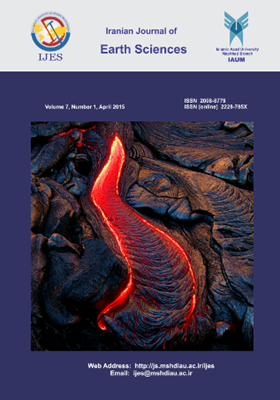Biostratigraphic Correlation of Elikah Formation in Zal Section (Northwestern Iran) with Ruteh and Type Sections in Alborz Mountains Based on Conodonts
الموضوعات :Nazanin BadriKolalo 1 , Bahaeddin Hamidi 2 , Seyed Hamid Vaziri 3 , Seyed Ali Aghanabati 4
1 - Department of Geology, Science and Research Branch, Islamic Azad University, Tehran, Iran.
2 - Earth Sciences Research Institute, Geological Survey of Iran, Tehran, Iran.
3 - Department of Geology, Tehran North Branch, Islamic Azad University, Tehran, Iran.
4 - Earth Sciences Research Institute, Geological Survey of Iran, Tehran, Iran.
الکلمات المفتاحية: Elikah Formation, biostratigraphic correlation, Early Triassic, conodonts, mass extinction,
ملخص المقالة :
Conodonts are the most important fossil remains from the largest Phanerozoic extinction as well as the mass extinction of the late Paleozoic and could be used for exact dating during this period. Triassic deposits located in the Elikah Formation contain exposures in most of the Alborz sections as well as the Zal section in northwestern Iran. In this study, the Elikah Formation was investigated from a biostratigraphy point of view in the type section and Ruteh section of the Alborz Mountains and Zal section in the Jolfa region based on the existing conodonts. Biostratigraphy study of more than 300 samples taken from these three sections, resulted in the identification and introduction of the following conodont biozones: Taxone Range Zone Hindeodus parvus and Pachycladina symmetrica – Pachycladina Oblique Assemblage Zone in the type section, Hindeodus parvus Taxon Range Zone, Hadrodontina –Pachycladina Assemblage Zone and Parachirognathus – Furnishius Assemblage Zone in the Ruteh section and finally Hindeodus parvus Taxon Range Zone, Isracicella staeschei Taxon Range Zone and Arachirognathus – Furnishius Assemblage Zone in the Zal section. These biozones indicate that the Elikah Formation, in the three previously defined sections, is Early Triassic (Griesbachian). Additionally, comparison of the biozones in these sections illustrates a biostratigraphic correlation of Early Triassic deposits in the Zal, Ruteh and type sections.


